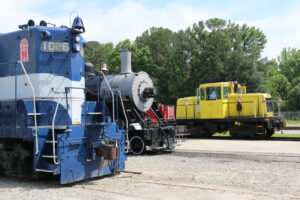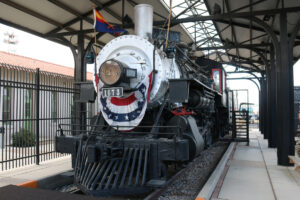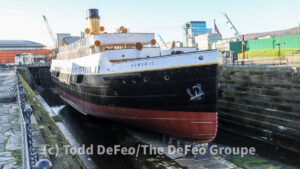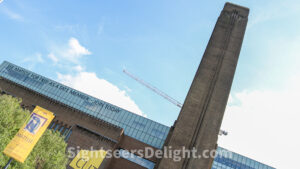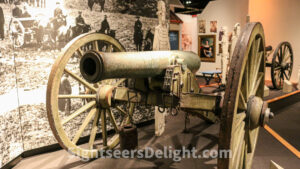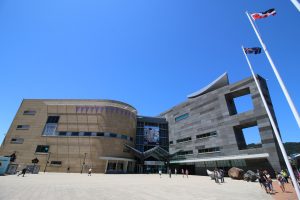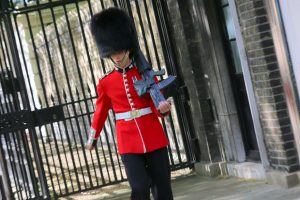The 35-acre Southeastern Railway Museum opened in its current location in 1998. The museum, which previously operated on a 12-acre site until 1997, is home to approximately 90 pieces of rolling stock, including locomotives, passenger cars and cabooses. Guests can board a vintage caboose for a ride around the museum’s grounds, which was previously home to a railcar repair facility. The museum has been designated “Georgia’s Official Transportation History Museum.”
30096
The Southern Arizona Transportation Museum preserves and interprets the history of railroads in southern Arizona. The one-time records vault building at the former Southern Pacific depot houses the museum. The city of Tucson purchased the building in 1998 and renovated it in 2004 to restore it to its 1941 style. Tucson Mayor Bob Walkup helped dedicate the museum on March 20, 2005, the 125th anniversary of the arrival of the railroad in Tucson. The centerpiece of this museum is Southern Pacific locomotive No. 1673. Schenectady Locomotive Works built the steamer in 1900, and it starred in the movie Oklahoma in 1955.
85701
The Southern Museum of Civil War & Locomotive History, a Smithsonian Institution affiliate, features collections of rare Civil War weapons, uniforms and other personal items; an exciting exhibit about the Great Locomotive Chase, including the General locomotive; and a full-scale replica of a locomotive factory that helped rebuild the South after the war. The Jolley Education Center features a variety of hands-on exhibits to inspire a love of learning in children. During the sesquicentennial, 150th anniversary of the Civil War, the Southern Museum hosted events exploring topics relevant to this tumultuous time in history.
30144
SS Nomadic was one of two vessels the White Star Line commissioned in 1910 to transport passengers to the new ocean liners RMS Olympic and RMS Titanic. The vessels were too large to dock in Cherbourg Harbour, necessitating the SS Nomadic and a sister vessel, the SS Traffic. It has been fully restored to her original 1911 appearance. Best known for transferring first- and second-class passengers to the Titanic at Cherbourg, Nomadic went on to serve in multiple roles over its career. Now back in Belfast, where she was designed and built, the ship is preserved in Hamilton Dock as a major visitor attraction. Spread across four decks, the experience offers an authentic sense of what it was like to board the Titanic, highlighting original design details and the clear distinctions between class areas.
The Susanna Dickinson Museum occupies the house Joseph Hannig constructed in 1869 for his new wife, Susanna Dickinson. Dickinson survived the Battle of the Alamo and delivered the news of its fall to Sam Houston. Houston went on to defeat Santa Anna at the Battle of San Jacinto, winning independence for the Republic of Texas. Dickinson earned the nickname of the “Messenger of the Alamo.” The “rubble-rock” style house, a style of architecture brought to the Texas Hill Country by German immigrants, is the only remaining residence of Susanna Dickinson. The museum displays rare Dickinson family artifacts and furniture Hannig produced.
78701
Tate Modern is among the world’s largest modern and contemporary art museums. The museum, which opened in the former Bankside Power Station in May 2000, is one of the most visited attractions in London. The museum houses more than 60,000 works of art that are regularly rotated. Its collection displays of the Tate Modern is open to the public for free.
Opened in January 2009, Tellus is home to one of only two digital planetariums in Georgia. The 120,000-square-foot museum also includes Science in Motion, a journey through the development of motorized transportation. Tellus replaced the Weinman Mineral Museum, a 9,000-square-foot museum.
30120
The Tennessee State Museum highlights the history of Tennessee starting from pre-colonization and into the 20th century. The museum interprets the Frontier, the age of President Andrew Jackson and the American Civil War.
New Zealand’s national museum, Te Papa Tongarewa, opened in 1998 on Wellington’s waterfront. The museum, a celebration of New Zealand’s identity – the people, culture and environment, features hi-tech and traditional displays. As well as significant collections of New Zealand art, the 16,000-plus taonga / treasures looked after by Te Papa are the largest Māori collection in any museum and cover a broad spectrum of Māori art and culture, from revered and significant cultural heirlooms through to humble everyday items dating from early pre-European times to today. In 2017, the museum was named as one of the top 25 museums in the world by TripAdvisor – the only museum in Australasia to be included.
Watching the changing of the guards at Buckingham Palace is a tradition for visitors to London. For those wanting to learn more about the guards, a visit to The Guards Museum is a must. The museum tells the story of the five regiments of Foot Guards namely Grenadier, Coldstream, Scots, Irish and Welsh Guards. The museum, which opened in 1988 in Wellington Barracks on Birdcage Walk near Buckingham Palace, chronicles the five regiments’ history from the 17th century to modern times. The museum’s exhibits include examples of Guards uniforms, weapons and various artifacts that interpret the history of the regiments and what being a soldier in the Guards is all about.

